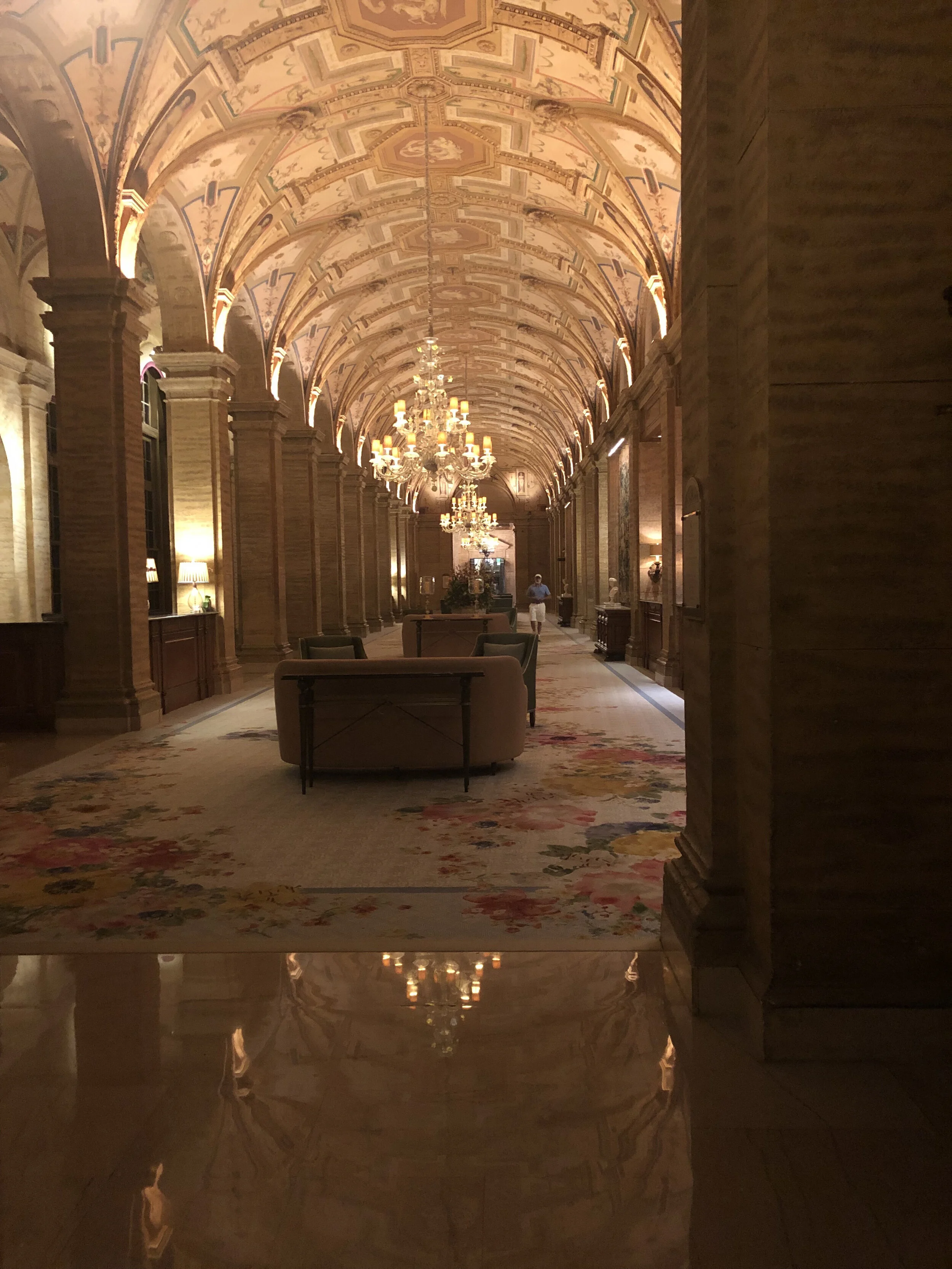Architectural Travelogue - Miami Art Deco
Almost 35 years ago in 1986, I found myself riveted by a seven-part series that aired on PBS called Pride of Place: Building the American Dream. Featuring New York architect Robert A. M. Stern as the host of the documentary—then a Professor of Architecture at Columbia University and Director of Columbia’s Temple Hoyne Buell Center for the Study of American Architecture—I remember being captivated by the program, as it encapsulated my lifelong love of both travel and architecture.
The series took viewers behind the scenes and into the blueprints of American landmarks as diverse as Hearst Castle, the Flatiron Building, Mount Vernon, and Disney World, exploring the country through cities, campuses, suburbs, and resorts.
Over the years, I’ve had the opportunity to visit most of the places toured in the documentary, but I’d never been to the Art Deco District of Miami or seen the grand beach hotels featured in the program. So when the AIBD hosted their latest conference in Florida, Mary and I made it a point to spend some time in Miami for a little architectural field trip.
The AIBD conference was held in beautiful Clearwater, Florida, and after enjoying the great events and gulf coast beaches, we took a driving adventure through the Everglades to get to Miami.
Miami Art Deco Historic District
We greatly enjoyed walking the Art Deco Historic District—a square mile filled with hundreds of preserved Art Deco buildings that have been beautifully restored. In white and pastel tones of stucco ranging from mint to lemon to pistachio to berry sherbet, the hotels and buildings dazzled like ice cream on the boiling hot day in August when we visited.
The Miami Art Deco District boasts over 800 buildings from the 1920s, 30s, and 40s, and it is the largest concentration of Art Deco architecture in the world.
Finished in 1941, The Carlyle is quintessential Miami Beach deco. Its iconic facade is a beautiful example of the Art Deco rule of thirds, and it’s been the backdrop for many classic Miami-based films including Scarface, The Birdcage, and Bad Boys.
Opened in 1936, The Breakwater is pure Art Deco, with an emphasis on symmetry and clean, colorful lines. Designed by Anton Skislewicz, the hotel’s electric blue and neon-lit central tower epitomizes Miami Beach.
The Fontainebleau Miami Beach
After spending some time exploring the Art Deco District, we took the trolley north to the Hotel Fontainebleau, which I remembered from the Pride of Place documentary I watched so many years ago. The Fontainebleau was designed by Russian-born architect Morris Lapidus in 1954, and, to quote Robert Stern, he sought to create “a new aesthetic identity for Miami.” Stern stated that “Lapidus invented a vision of an architectural past that never existed,” and called him a “designer of permanent stage sets.”




Thinking of hotels from the perspective of Hollywood sets remains fitting for Miami, which has played host to entertainers and the wealthy for decades. During the Golden Age of Hollywood, megawatt stars from Jackie Gleason to Frank Sinatra to Elvis Presley electrified South Beach, and the hotels built there during the 50s and 60s were even more opulent, with grand ballrooms suited to host stars of the silver screen.
Architect Morris Lapidus wrote, “If you create a stage, and it is grand, everyone who enters will play their part,” and The Fontainebleau, with its golden staircase, opulent lobby, and sparkling pools, has indeed been the stage for many memorable Miami moments. Frank Sinatra taped a special there to welcome Elvis home from his time in the Army, Jerry Lewis’s 1960 film The Bellboy was set there, and the hotel features prominently in the 1964 James Bond film Goldfinger. Even now, the hotel is the setting for ABC’s new series Grand Hotel, still living up to its original design intention to reflect and inspire Hollywood glamour.
The Breakers
Later that evening, we capped off our tour with Baked Alaska at The Breakers Hotel. It felt fitting to enjoy such a performative dessert from the Gilded Age after a day spent enjoying performative architecture—not to mention how good ice cream sounded after an August day in the Miami heat.
From Alaska to Florida, our country is filled with architectural treasures. There’s so much to appreciate about this profession—one where science (physics, engineering, and hurricane resistance) comes together with art (intention, forms, and point of view) to create our built environments. So whether you’re a fan of the Deconstructivist stylings of Frank Gehry or prefer Neoclassical symmetry and order, get out and see what design is all about.
- Larry Gilland











